The Byzantine Jewel of Istanbul, Hagia Sophia, is a synthesis of Ottoman and Byzantine cultures. Hagia Sophia was once a cathedral, afterward a mosque, and is now a museum. Its architectural beauty, which is expressed in the artistry of the domes, has always been admired.
Admire the baroque church, and the exquisite interiors of the Grand Dome with patterns of marble & stone, and explore both Christian and Muslim artifacts that are displayed alongside one another on the Hagia Sophia Tour.
Essential Information for Visiting Hagia Sophia
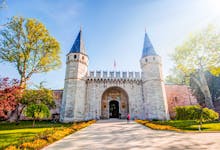
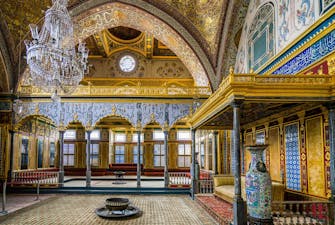
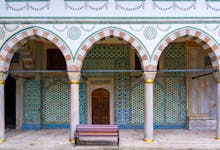
Things to know
Number of visitors per year: 3-3.5 million
UNESCO World Heritage Site designation:1985
Established: A.D. 532
Architect: Isidore of Miletus and Anthemius of Tralles
Architectural style: Byzantine
Opening Hours And Address
Daily
Address : Sultan Ahmet Ayasofya Meydanı No:1 34122/Istanbul
Get Directions
Why You Must Visit Hagia Sophia
The most famous landmark in Istanbul and a major draw for tourists is Hagia Sophia. Numerous travellers flock to Hagia Sophia each year to be in awe of its magnificent architecture, history, and workmanship. It is a prime example of coexisting with many cultures in addition to having a fascinating history as a cathedral, mosque, and museum. It is unique for this factor!
Recommended Hagia Sophia Tickets
Your preference for Hagia Sophia tickets will depend on the type of experience you want. The Hagia Sophia has a well-established reputation. Explore its mysticism-inspired interiors and marvel at its breathtaking architecture. To receive guided tours of the Hagia Sophia along with skip-the-line access and other combo package deals with other well-known Istanbul attractions, purchase your tickets here. .
Hagia Sophia's History
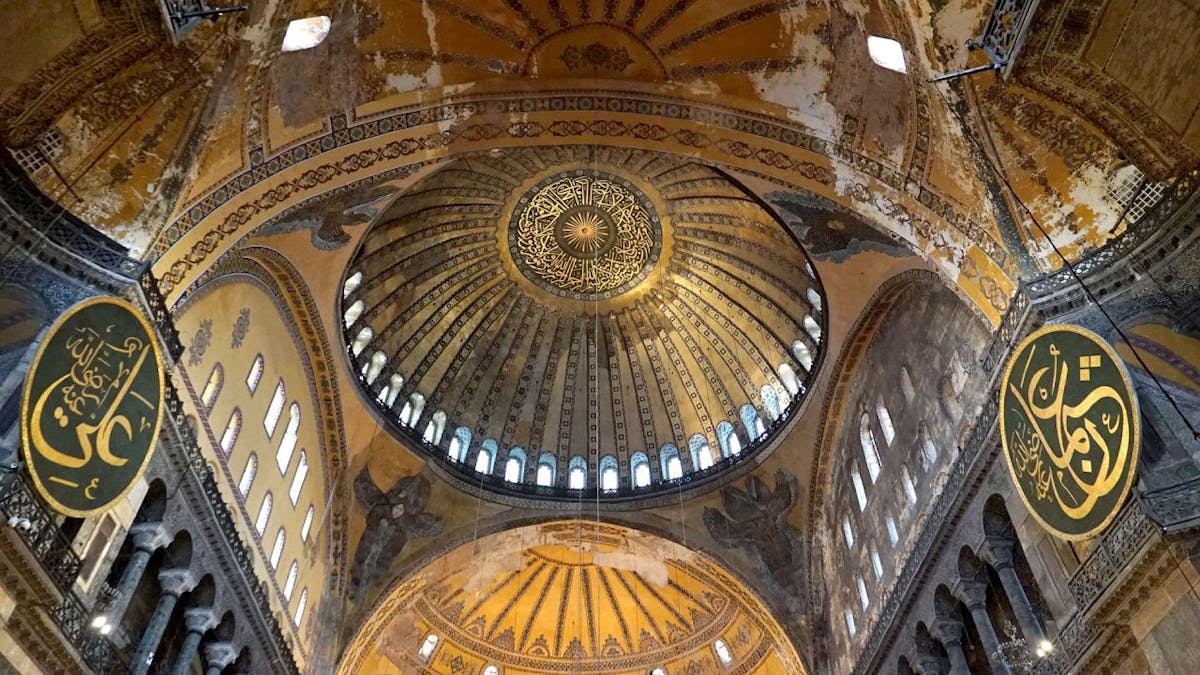
Very little of the original Hagia Sophia, which Constantine the Great constructed in the fourth century, as well as the one that was added on in the fifth century, is still standing today. The present structure was erected between the years of 532 and 537 AD at Justinian's direction.
The Hagia Sophia was built in the Byzantine architectural style by Isidore of Miletus and Anthemius of Tralles, with elements like an enormous dome as a prominent feature. It was the Eastern Orthodox Church's main place of worship during the period. The structure was turned into a mosque under Sultan Mehmed II's orders when the Ottoman Turks invaded Constantinople in 1453. It was during this time that several prominent architectural elements were added, including the mihrab and the minarets at each of its four corners.
In an effort to secularise Turkey, the Hagia Sophia was converted into a museum in 1934, and it quickly rose to the top of the list of must-see destinations in the nation. However, Turkish President Erdogan controversially changed its museum classification in 2020, and it is now once again a place of Muslim worship.
Hagia Sophia's Unique Architecture
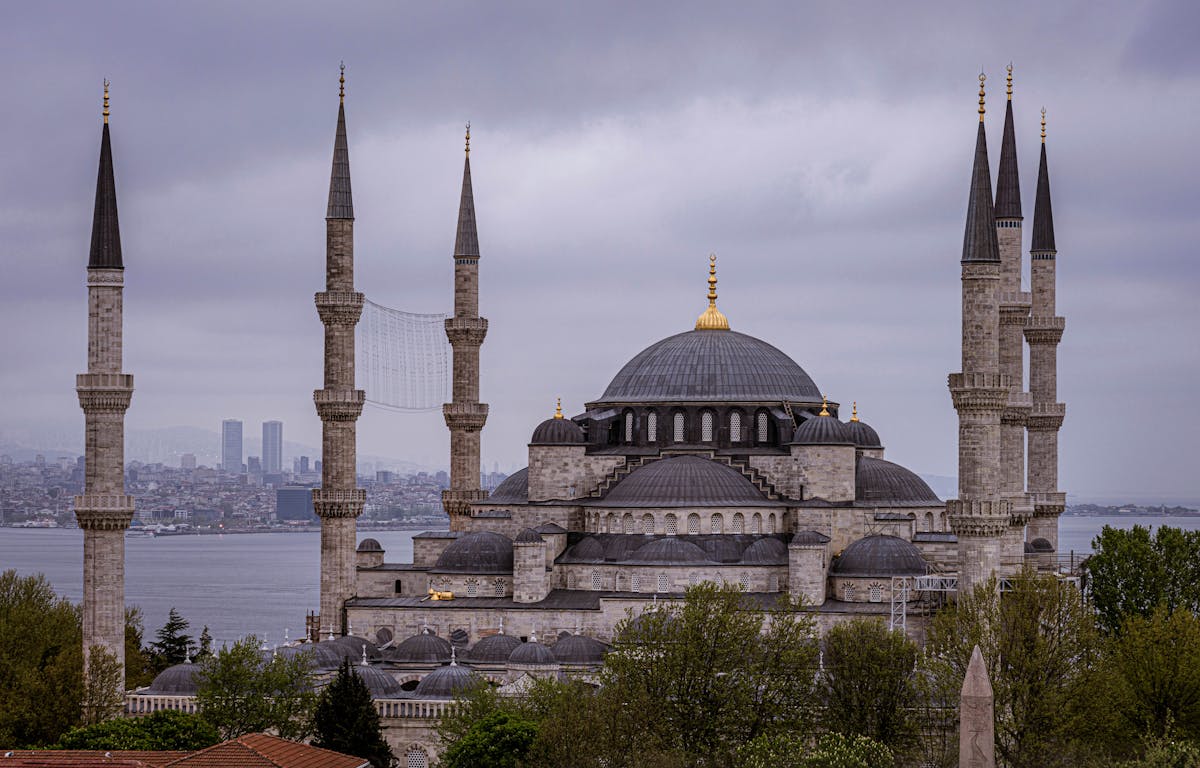
Hagia Sophia is a work of unfathomable beauty that has withstood the test of time. More than simply the enormous, ornate dome, the embellished marble pillars, and the beautiful mosaics of the saints, angels, Virgin Mary, and Jesus contribute to the grandeur and splendour of this location. This charming museum derives its grandeur from the coexistence of two different religions, and this is what makes it unique. Its attractiveness cannot be attributed to a single culture.
Hagia Sophia Highlights
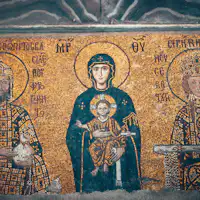
Mosaic ornaments
The majority of the beautiful mosaics employed by Byzantine craftsmen to decorate the interior of Hagia Sophia were made between the 10th and 12th century. The masterpieces are crafted of silver, gold, terracotta, glass, and colored stones and feature images of Jesus, the Virgin Mary, kings, saints, and others. These decorative tiles give this museum a royal feel.

VI. Leon Mosaic
The VI.Leon Mosaic, which measures 5 metres in width and 2.6 metres in height, is situated atop the Imperial Gate. This beautiful mosaic depicts Jesus Christ blessing all of humanity while seated on a pinnacle with a halo above his head as well as an open Bible in his hand (the inscriptions are in Greek). 'Peace be upon you all; I am the Light of the world', are the words that are interpreted.
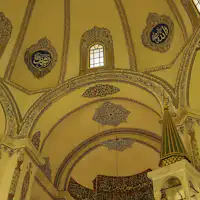
Wish Column
The Wish Column, often referred to as the "sweating column," "wishing column," or "weeping column," is located in the northwest corner of the structure. This column has a hole in the center and is covered in bronze plates. Some claim that it has been damp since Gregory the Wonderworker first appeared at the column in 1200, while others think the moisture is a tear from Mary. Many illnesses are said to be cured by contacting the moisture since it is known to have therapeutic characteristics.
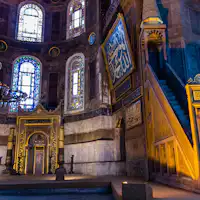
Emperor's Gate
The Emperor's Gate, which dates to the sixth century, is thought to have been constructed using timbers taken from Noah's Ark. The largest door measures 7 metres in height and is constructed of oak with bronze frames. It serves as a bridge between the internal narthex area and the main area and was only used by the Emperor.
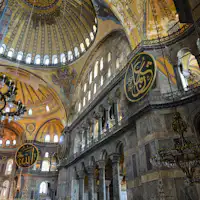
Talisman Gates
Hagia Sophia has 361 gates in all, but 101 of them are larger than the rest and are referred to as talismans. Unbelievably, there is always one additional door whenever these doors are counted.
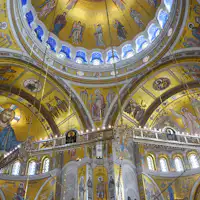
Sacred Relics of Hz.Jesus
It is reported that the holy relics of Hz Jesus are stored in a concealed chamber and were transported from Jerusalem and hidden in Hagia Sophia. People had the idea that Jesus would make a comeback 40 thousand years from now and make his first appearance in Istanbul's wonder.
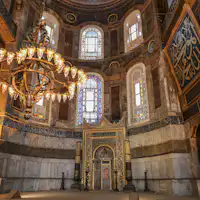
Apocalyptic Date
Hızır wrote the day the apocalypse will begin after entering the building and facing south. The column reads, "Yevm-i Pazar on eighteen, 1038 a year."
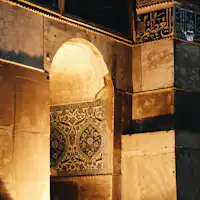
Devil's prison in Hagia Sophia
According to legend, the devil is imprisoned in Hagia Sophia. After conquering Istanbul, Sultan Mehmet appointed Akşemsettin in charge of converting Hagia Sophia into a mosque. The demon, however, was opposed to Hagia Sophia becoming a mosque. He agitated the employees, causing Akşemsettin to kneel and plead to God, who graciously approved his request. In Hagia Sophia, he bound the demon to a marble stone.
Best Time to Visit Hagia Sophia
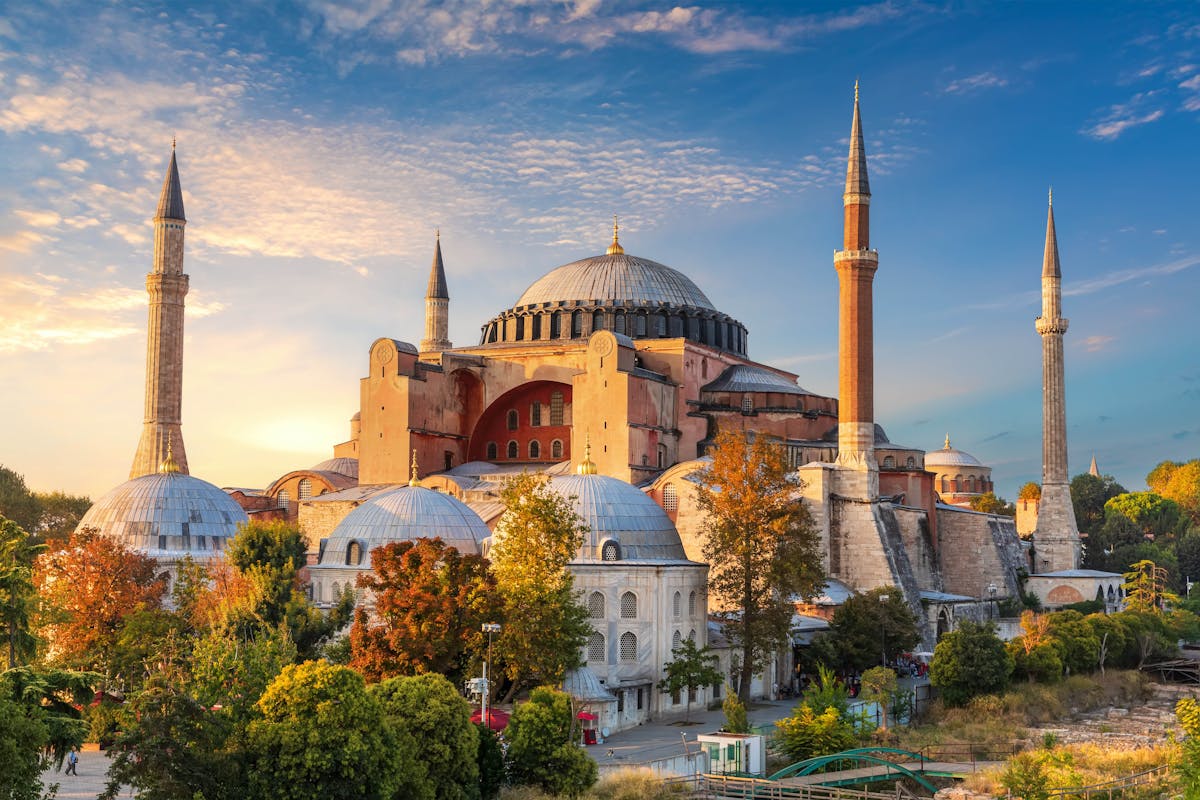
Hagia Sophia is best visited in the late afternoon, just before it closes. Come roughly 1.5 hours before closing time if you're visiting during the busy season (fall, and spring, with a notable surge in May). There is practically any line 2-3 hours before closing time in the low season (November-March, June-July). Visit the museum at opening if you think your visit might require additional time (or about 15 minutes before the high season). April-May and September-October are the busiest travel seasons.
Hagia Sophia Opening Hours
Daily
It is only closed to non-worshippers during prayer hours on Fridays.
Hagia Sophia - How To Reach
- By Bus: 35A, 36, 36ES, 38, 38Z,97, 92B.
- By Tube: M2.
- By Tram: T1.
- By Train: MARMARAY (ATAKÖY - PENDIK), MARMARAY (HALKALI - GEBZE).
Taking a light tram line and stepping off at the closest Sultanahmet stop, from which Hagia Sophia is a 5-minute walk, is the best and easiest method to go to Hagia Sophia.
Restaurants Near Hagia Sophia
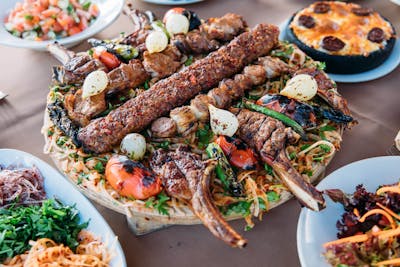
Zeferan Restaurant also is a unique point which serves best examples of food of Turkish and International Cuisine, with such a sea view in a unique atmosphere decorated with mother of pearl furniture and hand made carpets. All dishes are served on antique plates; each one is around 100 or more years old. .

Ziyade Fasl's kitchen, run by chef zlem Mekik, mixes the most delectable dishes from traditional tavern food with a contemporary approach, delivering its customers unique and unexpected flavours that leave an impression on the palette.

This restaurant must be on your itinerary if you visit Istanbul, even for a day. The food is exquisite, the service is first-rate, and the music and shows are fantastic. There is nothing better than returning to a breathtaking location where the traditional music and welcoming staff will make you feel like part of a family after a day of sightseeing and admiring the beauty of Istanbul.

At the most picturesque area of the Sarayburnu coast, at the foot of ancient Istanbul, Sur Balak offers a fresh take on Mediterranean cuisine and the seafood idea. It is now up to you to set up shop with your loved ones at the tables of this unique location and savour the flavours—from delectable seafood to fresh fish—that you desire.
Hagia Sophia facts that you probably didn’t know
- Contrary to popular belief, Sophia has nothing to do with the female name. In actuality, the Greek term for wisdom is "Sophia." Therefore, "The Church of the Holy Wisdom" is the true meaning of Hagia Sophia.
- It held the title for largest dome ever built until Michelangelo's dome atop St. Peter's Basilica in Rome overtook it.
- Hagia Sophia, the main mosque in Istanbul, served as a model for several mosques, including the Blue Mosque and the Süleymaniye Mosque.
- The church's four minarets were constructed by several sultans at various dates. Mehmed II built the first one, a brick minaret; Bayazid II added the second; and Selim II built the final two.
- The church building has been fully burned down twice and partially damaged by an earthquake since it was first constructed in 325 AD.
- The Wishing Column, Sweating Column, or Perspiring Column is a column at Hagia Sophia that is moist to the touch. It is situated on the northwest side of the church, and it has a hole in it where people can stick their fingers to get well. It is thought to have St. Gregory's blessing, who appeared there, and thus brings about healing.
- The attack of Hagia Sophia by the Crusaders in 1204 played a significant part in the Great Schism, which separated the Eastern (Orthodox) branch from the Western (Roman) one.
- In 1923, Mustafa Kemal Atatürk became the country's first president. He westernised Turkey and outlawed various Islamic practices. This served as a model for the secularisation of the Hagia Sophia, which was afterwards turned into a museum. The main mosque in Istanbul was the Hagia Sophia before it was converted. As it would impart fresh knowledge, its conversion was seen favourably by the Eastern nations and the rest of the globe.
- Hagia Sophia saw changes in ornamentation when Justinian's authority came to an end when he was defeated by Mehmed II, ruler of the Ottoman Empire. Rather than being destroyed, Christian ornaments were concealed. These were later discovered, and as a result, both Muslim and Christian elements may be seen in the Hagia Sophia museum today.
Insider Tips for Visiting Hagia Sophia
- The Hagia Sophia has a free entrance. However, as the museum doesn't provide much information, you should choose an audio tour.
- To avoid last-minute bother with lodging and accommodations, purchase your tickets in advance.
- The best times to visit are late afternoon and early morning, about 9 am, when there are fewer visitors.
- The building's ground floor has the best Instagram potential. You get to photograph the stunning interiors and beautiful ceiling.
- As the ancient, Christian church was erected towards the East, which was also the direction facing Mecca, the majority of the lovely artworks are on the east end.
- Before stepping upon the mosque's rugs, take off your shoes.
- Observe the dress code and refrain from donning too-revealing attire. Men must refrain from wearing shorts, while women must cover their heads with a scarf.
- Authorities hand out overalls and headscarves inside the building, which is essential and where they are also less expensive.
- Carry enough cash since most businesses only accept cash.
- To comfortably explore the museum on foot, dress comfortably and put on some walking shoes.
Things to do around Hagia Sophia
FAQs
- Essential Information for Visiting Hagia Sophia
- Why You Must Visit Hagia Sophia
- Recommended Hagia Sophia Tickets
- Hagia Sophia's History
- Hagia Sophia's Unique Architecture
- Hagia Sophia Highlights
- Best Time to Visit Hagia Sophia
- Hagia Sophia Opening Hours
- Hagia Sophia - How To Reach
- Restaurants Near Hagia Sophia
- Hagia Sophia facts that you probably didn’t know
- Insider Tips for Visiting Hagia Sophia
- Things to do around Hagia Sophia
- FAQs
After 9 a.m. is the best time to attend the mosque because there are fewer people there. Winter is the ideal season to visit Hagia Sophia because of the lovely weather.
Everybody can enter the Hagia Sophia for free, and it is open every day.
Yes. Given that Hagia Sophia is a place of worship, there is a rigorous dress code in force. Wearing attire that exposes your head, shoulders, or knees is not recommended. Women should cover their heads with headscarves, which are offered without charge at the entrance.
Avoid going to the Hagia Sophia Mosque at prayer times and on Fridays at noon.
To guarantee the limited visitor capacity and avoid long lines at the ticket desks, visitors must purchase their tickets online in advance. Additionally, all visitors are required to wear masks the entire time they are there and go through a temperature check before entering.







